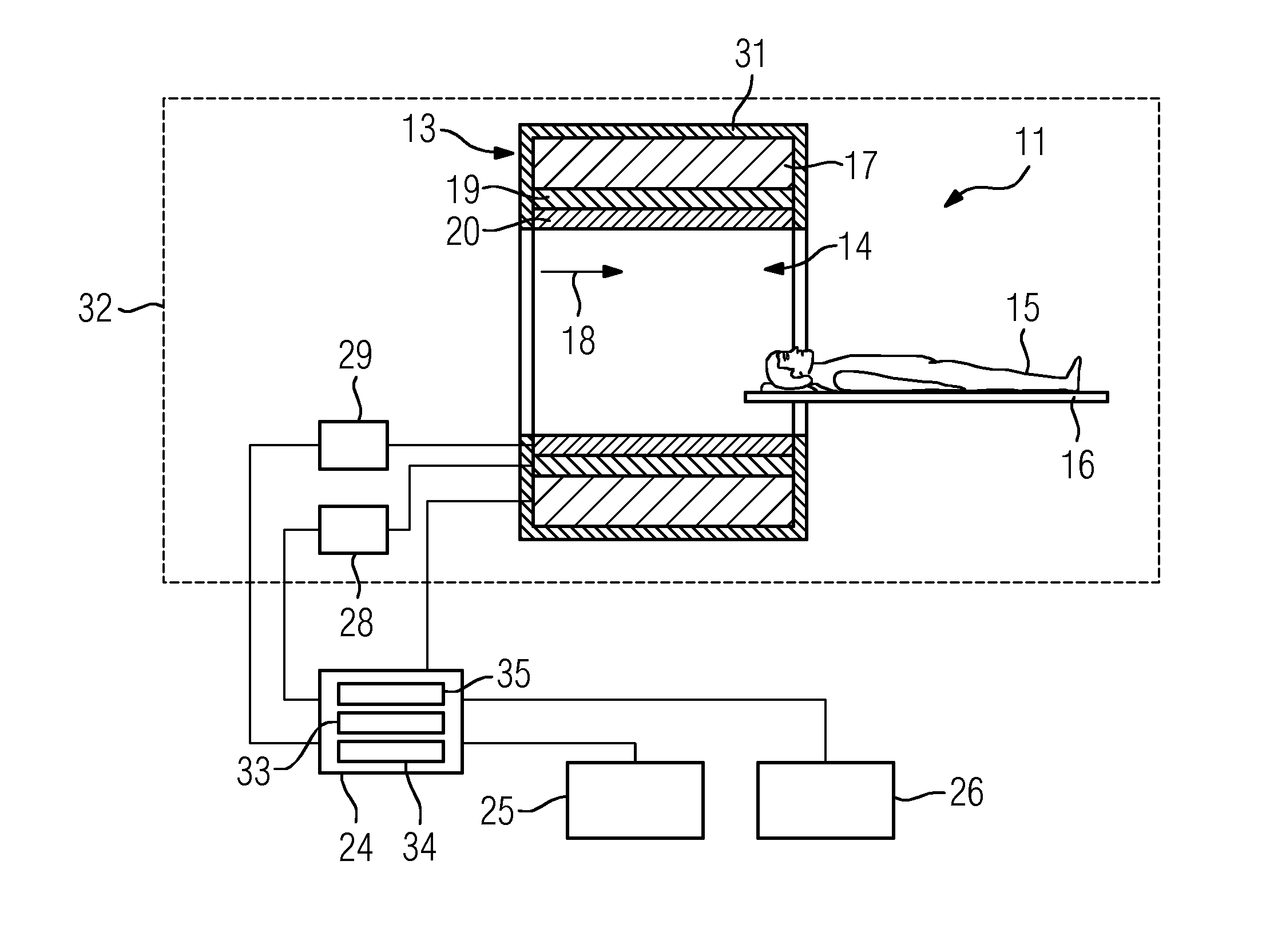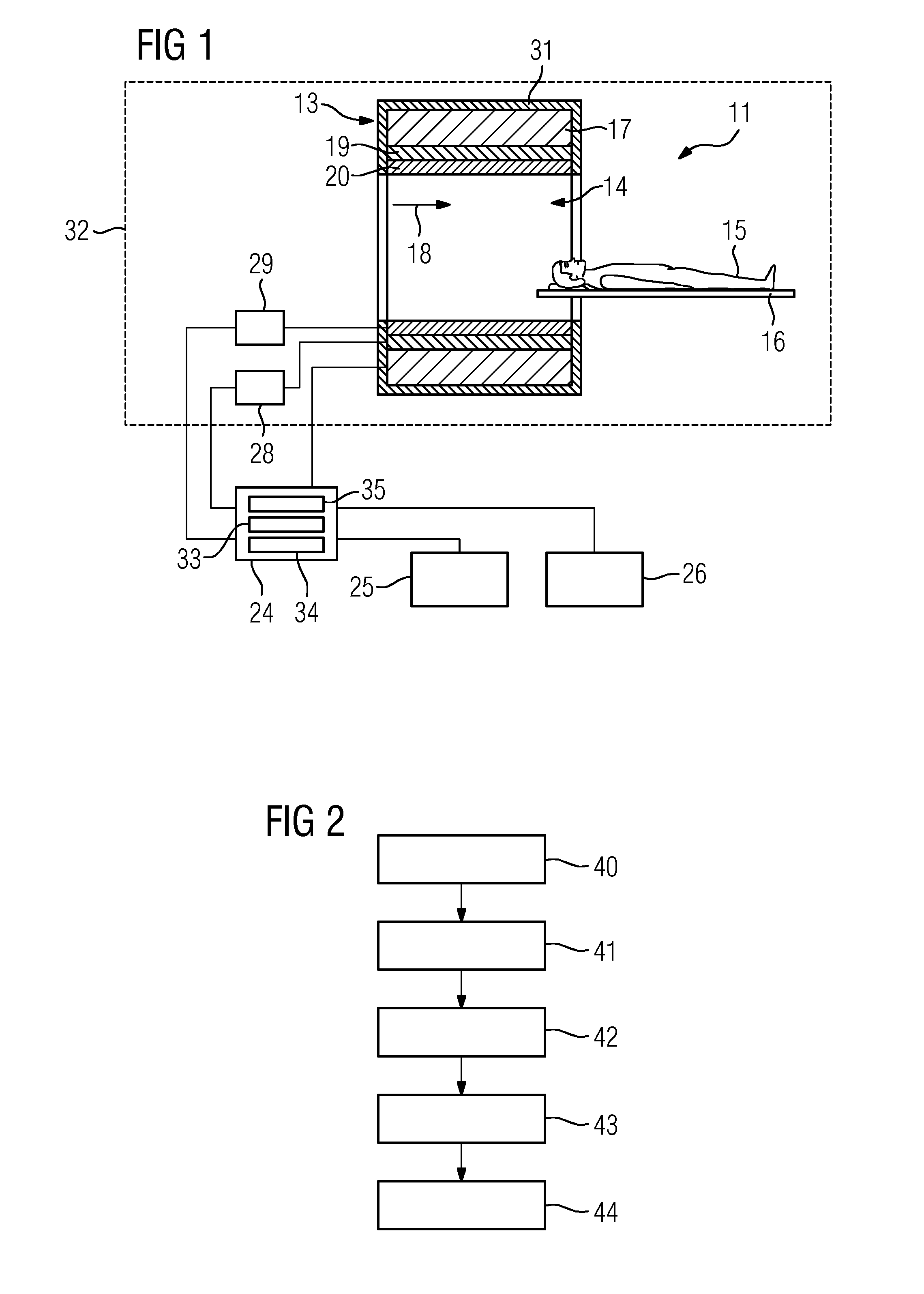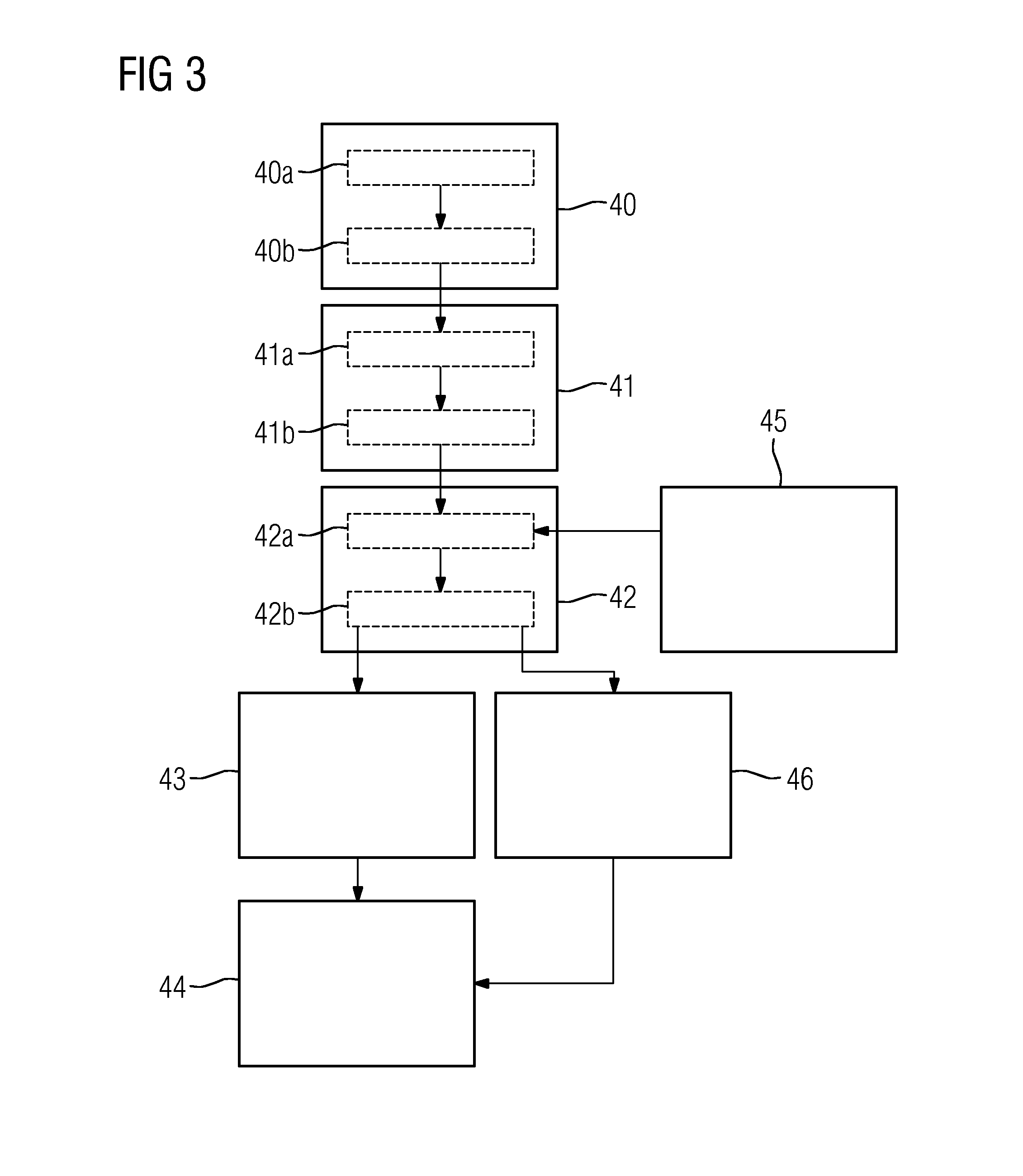Method for determining a spatially resolved distribution of a marker substance
a technology of spatial resolution and marker substance, applied in the field of method for determining the spatial resolution distribution of a marker substance, to achieve the effect of good limitation of the marker substance, particularly easy visualization, and particularly easy determination
- Summary
- Abstract
- Description
- Claims
- Application Information
AI Technical Summary
Benefits of technology
Problems solved by technology
Method used
Image
Examples
first embodiment
[0049]FIG. 2 shows a flow chart of an inventive method for determining a spatially resolved distribution of a marker substance which is located in an object under examination 15.
[0050]In a first method step 40, the signal acquisition unit 32 of the magnetic resonance device 11 acquires magnetic resonance signals of an examination region of the object under examination 15 by means of a quantitative magnetic resonance method. In a further method step 41, a quantification of a measurement-n-tuple of material parameters takes place with the aid of the acquired magnetic resonance signals by means of the quantification unit 33 of the computing unit 24. In a further method step 42, a comparison of the measurement-n-tuple with a known marker substance-n-tuple of the marker substance takes place by means of the comparison unit 34 of the computing unit 24. In a further method step 43, a calculation of a spatially resolved distribution of the marker substance in the examination region takes pl...
second embodiment
[0051]FIG. 3 shows a flow chart of an inventive method for determining a spatially resolved distribution of a marker substance which is located in an object under examination 15.
[0052]The following description is essentially restricted to the differences from the exemplary embodiment in FIG. 2 wherein, with regard to method steps which remain the same, reference is made to the description of the exemplary embodiment in FIG. 2. In principle, the same method steps are essentially identified with the same reference signs.
[0053]The second embodiment of the method according to the invention shown in FIG. 3 essentially comprises the method steps 40, 41, 42, 43 of the first embodiment of the method according to the invention as shown in FIG. 2. The second embodiment of the method according to the invention shown in FIG. 3 additionally comprises further method steps and sub-steps. Also conceivable is an alternative method sequence to that of FIG. 3 which has only part of the additional meth...
PUM
 Login to View More
Login to View More Abstract
Description
Claims
Application Information
 Login to View More
Login to View More - R&D
- Intellectual Property
- Life Sciences
- Materials
- Tech Scout
- Unparalleled Data Quality
- Higher Quality Content
- 60% Fewer Hallucinations
Browse by: Latest US Patents, China's latest patents, Technical Efficacy Thesaurus, Application Domain, Technology Topic, Popular Technical Reports.
© 2025 PatSnap. All rights reserved.Legal|Privacy policy|Modern Slavery Act Transparency Statement|Sitemap|About US| Contact US: help@patsnap.com



